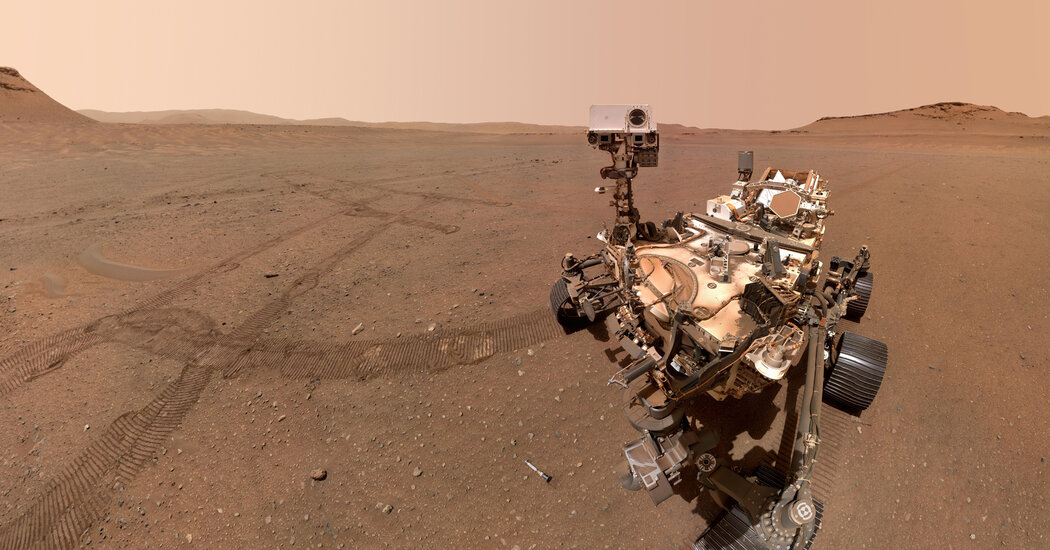The Mars Sample Return effort was billions of dollars over budget and not expected to return to Earth with its samples until 2040.
NASA needs help fetching rocks from Mars, and on Tuesday, agency officials announced that they have not yet quite decided how to do that. Instead, they are leaving a final decision to the incoming administration of President-elect Donald J. Trump.
But the officials said they had figured out how to potentially launch the mission and bring those red planet rocks back to Earth sooner by reducing the size and weight of the mission, known as Mars Sample Return. Cost estimates last year had risen to as much as $11 billion. With the revisions, Mars Sample Return is still expensive, but would be less than $8 billion.
“That’s a far cry from $11 billion,” Bill Nelson, the NASA administrator, said during a telephone news conference on Tuesday.
Bringing Martian rock and soil samples to Earth is among the top priorities of planetary scientists. While spacecraft in orbit and rovers on the surface of Mars have discovered plenty, their capabilities are limited. By studying fresh rocks up close with the latest, most powerful instruments in their laboratories, scientists could unravel mysteries of the red planet’s past, including possibly whether life ever arose there.
The first phase of Mars Sample Return is already underway. NASA’s Perseverance rover, which landed on Mars in 2021, has been drilling and collecting cylindrical samples of rock and soil in Jezero Crater, which contains an ancient river delta.
The rest of the plan, devised by NASA’s Jet Propulsion Laboratory in California, requires a complex choreography. First, a new robotic spacecraft would land near the Perseverance rover, which would then hand over about 30 of its rock samples to launch into orbit around Mars. Yet another spacecraft, from the European Space Agency, would retrieve those samples, take them back to Earth and drop them off within a small disk-shaped vehicle that would land in a Utah desert.
